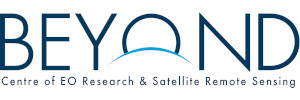![]()
Mosquito-Borne Diseases (MBDs) infect almost 700 million people every year and are recognized in over 100 countries, causing millions of deaths annually. The changing climatic and ecological conditions, global travel and trade, human behavior, as well as the rapid and unplanned urbanization, are key factors that influence the seasonal and geographic distribution of vectors' population and therefore the transmission of the pathogens, causing the re-emerging and even more emerging of these diseases in countries where they were previously unknown. West Nile Virus (WNV) infection in humans and animals have been recorded in various areas of Greece, during the years 2010-2014 and 2017-2019, but also in other regions in Europe reaching an usually high record in 2018.
BEYOND Center of excellence has been working on the development of an Early Warning System (EWS) that utilizes new and enhanced satellite Earth Observation (EO) sensors with the purpose of forecasting and risk mapping the WNV outbreaks. Satellite EO data have been leveraged to estimate environmental variables that influence the transmission cycle of the pathogen that leads to WNV. The management and analysis of the open big satellite data has been conducted with the Open Data Cube (ODC), providing an open and freely accessible exploitation architecture. Statistical and machine learning algorithms were used for short-term forecast, while dynamical models were utilized for the seasonal forecast. This EWS for epidemics will be used as a tool for helping local decision-makers to improve health system responses, take preventive measures in order to curtail the spread of WNV in Europe and address the relevant priorities of the Sustainable Development Goals (SDGs) such as good health and well-being (SDG 3) and climate action (SDG 13).

